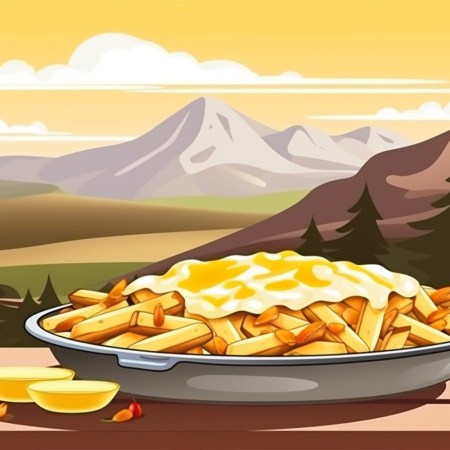This week, hundreds of thousands of people will descend upon Austin, Texas, for the annual South by Southwest festival, a nine-day marathon of musical performances, panels, film screenings, comedy sets and more breakfast tacos than any one human being should consume in their lifetime. But if you’re craving a festival experience that better reflects the SXSW of decades past — back when it was purely a way to discover up-and-coming bands in intimate venues, before it became overrun with tech bros in khakis handing out business cards — you may want to wait a few weeks and head a little further west.
Since its inaugural event in 2012, Boise, Idaho’s Treefort Music Fest has served as a more manageable, independent-minded alternative to SXSW. Like the Austin festival, it’s a multi-venue affair spread across the city, and over the years it has expanded beyond music to include 13 other “forts” highlighting everything from craft beer (Alefort) and comedy (Comedyfort) to the literary scene (Storyfort), yoga and movement classes (Yogafort) and drag performances (Dragfort). But when co-founders Lori Shandro, Drew Lorona, Megan Stoll and Eric Gilbert first created Treefort, the vision was simple: bring Boise’s local music scene some national attention.
“I come out of the DIY touring community, and I was pretty active in that,” Gilbert tells InsideHook. “But I grew up in Boise, and I just loved living in Idaho. The gravitational force at that time was pulling people like us into the Portlands or the Seattles or the L.A.s or the New Yorks of the world, and we loved those places, but also, what would it look if we committed to staying here and helping build a music scene? I guess that’s the impetus of it. At the core of it was like, we like living in Boise, we wished more touring acts stopped in Boise, and we wished the local talent had more visibility, more export opportunities from here, so that staying in Boise could be a viable option for artists.”
Gilbert has been able to apply his own experiences as a touring musician to Treefort (which takes place this year from March 20 to 24), but launching the other forts was a group effort borne out of the Boise community’s desire to get involved and bring their own interests to the table.
“Those are other folks from the community here that were excited about the general model and wanted to see themselves reflected in the festival too, so it’s become this big melting pot of opportunities to cross genres and cross-pollinate in the creative economy here,” he says. “We’ve taken a real open, collaborative approach with the community, so it’s really happened pretty organically. People would come to us and be like, ‘Hey, what if you did a literary portion?’ And we’d say, ‘Do you want to help us with it?’ And they’d say, ‘Oh, okay, sure.’”
According to Boise Mayor Lauren McLean, that collaborative spirit is typical of the Idaho state capital. “Boise’s the most remote city of its size in the country, and that’s always meant that Boiseans tackle problems in our own way, innovating solutions and calling on each other to implement them,” she says. “We welcome all comers because that’s what we’ve always done. So when someone has an idea that will pull us together, strengthen our sense of who we are, and create an opportunity for today and into the future, we embrace it. Like so much about Boise, Treefort’s homegrown. Lori and Eric had an idea, people embraced it, and then got to work. It’s quintessential Boise — in how it happened and in what and who it is and will become.”
How Boise Became One of the Nation’s Great Food Cities
Immigrant-friendly policies also made for great restaurantsOf course, the question of what it will become is a bit tricky. How does an artist-centric indie festival continue to grow and expand without getting too big or selling out? How can it continue to service the Boise community while drawing more and more out-of-towners, especially those who still have a bad taste in their mouths from when Lady Gaga headlined the Doritos stage at SXSW a decade ago? It’s a delicate balance, but it’s a challenge that Gilbert pays careful attention to.
“We’ve taken a very slow growth approach, right?” he says. “We purposely don’t pursue bigger headliners. Our core mission is we’re trying to service the developing scene mostly, but we want to book headliners that they’re excited about and reflect the spirit of those artists and basic colleagues that they look up to because I think if we were to just jump out and book one bigger headliner, it would bring a different culture to the festival. I do think that slow growth means we can hopefully grow for longer and last longer because I do think there is a capacity that you hit. I think a lot of festivals hit this ‘How do I top myself?’ sort of thing. Also, I think we’re a big festival in spirit, and I guess awareness to some degree, but we’re kind of a small festival as far as attendance in the scope of festivals. And that feels good.”
Even as a small festival, however, the impact on Boise as a whole has been tremendous. According to Carrie Westergard of Visit Boise, the tourism division of the Boise Metro Chamber of Commerce, the economic impact of last year’s Treefort was $11 million. Local businesses, hotels and restaurants all see a bump as festivalgoers from across the country head into town — many for the first time. But as McLean points out, the economic boost isn’t the only way the city has been strengthened by the fest.
“We’ve benefitted in so many ways,” she says. “There are the economic benefits, of course. Then there’s bigger impact it has on our creative community — it’s an opportunity for them to engage in sharing their work and in creating a festival that’s a nod to what is unique about Boise. We’ve all benefitted from the fun this week makes possible — getting outside as winter wanes, riding the bus between venues with a band playing on the bus as venue, connecting with people we haven’t met in the lines at El Korah, Pengilly’s and so many other venues, celebrating who we are — a city where everyone is welcome and cared for, and where everyone means everyone.”
That inclusive attitude is worth highlighting because there can often be an air of snobbery at festivals like these. But Westergard stresses that Treefort is for everyone, regardless of age or musical tastes.
“I know a lot of people are like, ‘Oh, I’m too old for that.’ I’ve heard that comment,” she says. “And it’s amazing when you actually do go, the diverse age range from people with their families, young children — especially because there’s Kidfort — to senior citizens really enjoying it. So all ages really can enjoy it. I think if people would just get that out of their head and try it, they’ll be really surprised at how much fun they have.”
This year, that fun will include sets from Ty Segall, Neko Case, Shamir, Patrick Watson with the Boise Philharmonic, Dawes with Lucius, and Boise’s own Built to Spill, to name a few. (You can find the full lineup and schedule here.) But the lineup also includes plenty of up-and-coming local bands looking to break through.
“I’m really excited about the Boise music scene right now,” Gilbert says. “There’s a lot of young talent coming up, and I want that young talent to continue to be excited about either staying here and being here or being excited about being from here when they go somewhere else and continue to come home and help the import-export of culture and music here in Boise, ’cause I have a 10-year-old daughter. It’s the kind of city I want to live in. It’s the kind of city that I want to raise my child in — access to diverse cultures and all these things.”
It’s the kind of city where even the mayor can be found taking in a performance from a buzzy new band, sampling the local cuisine or hopping from venue to venue at all hours of the night.
“I love it all,” McLean says. “I look forward to getting schedules from ‘the cool kids’ and using them to make my own. My daughter and her friends will visit from D.C. for the week, so I’ll probably be trying to follow them around. I look forward to pouring beer at the Main Stage and Alefort, riding bikes with my husband and friends from show to show, staying up way too late for too many nights in a row, finding new music that I’ll listen to afterwards, feeling the energy at El Korah, Treefort Music Hall and so many great venues, eating lamb at the Modern, searching for noodles and glitter at KIN, and being exhausted and rejuvenated and in love with my city and her people all over again, and all at once, after it’s over.”
This article appeared in an InsideHook newsletter. Sign up for free to get more on travel, wellness, style, drinking, and culture.


























